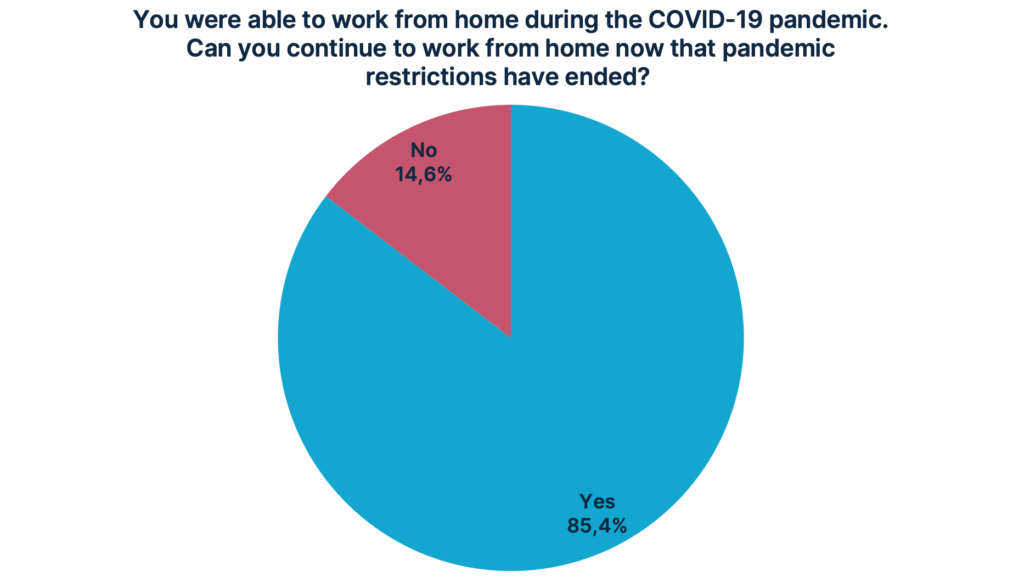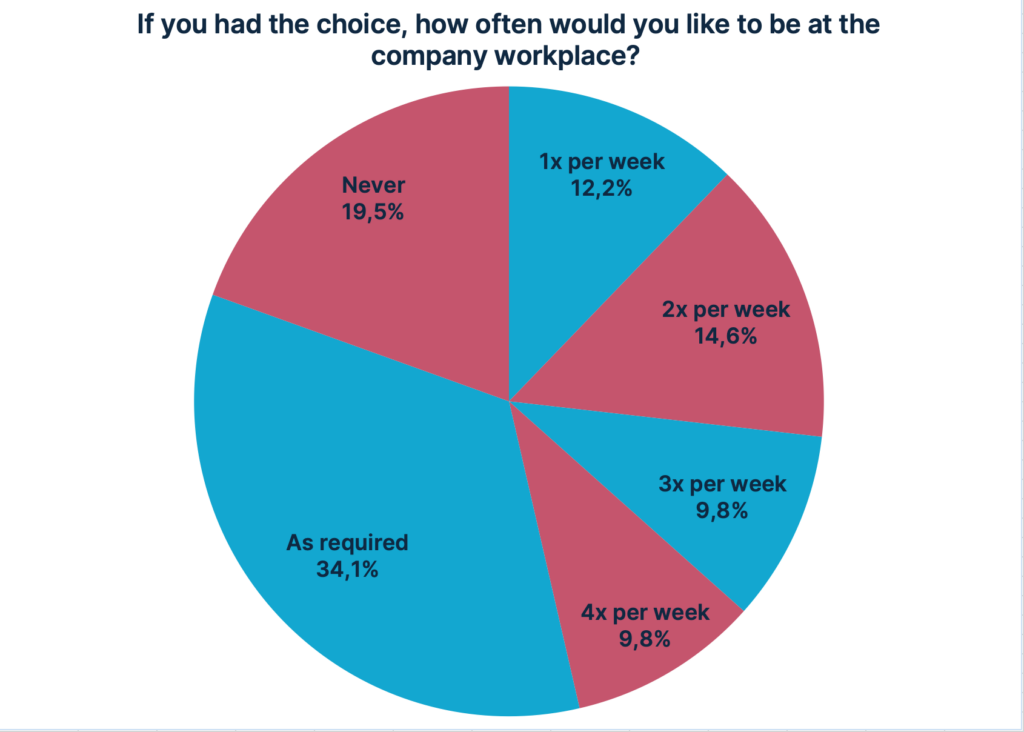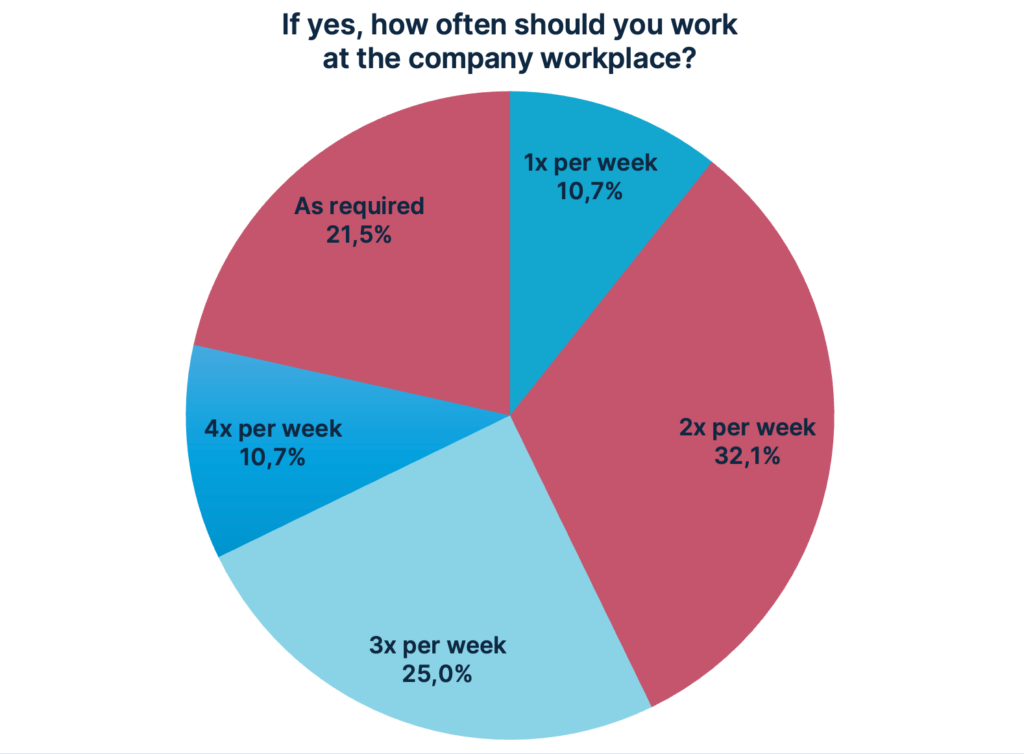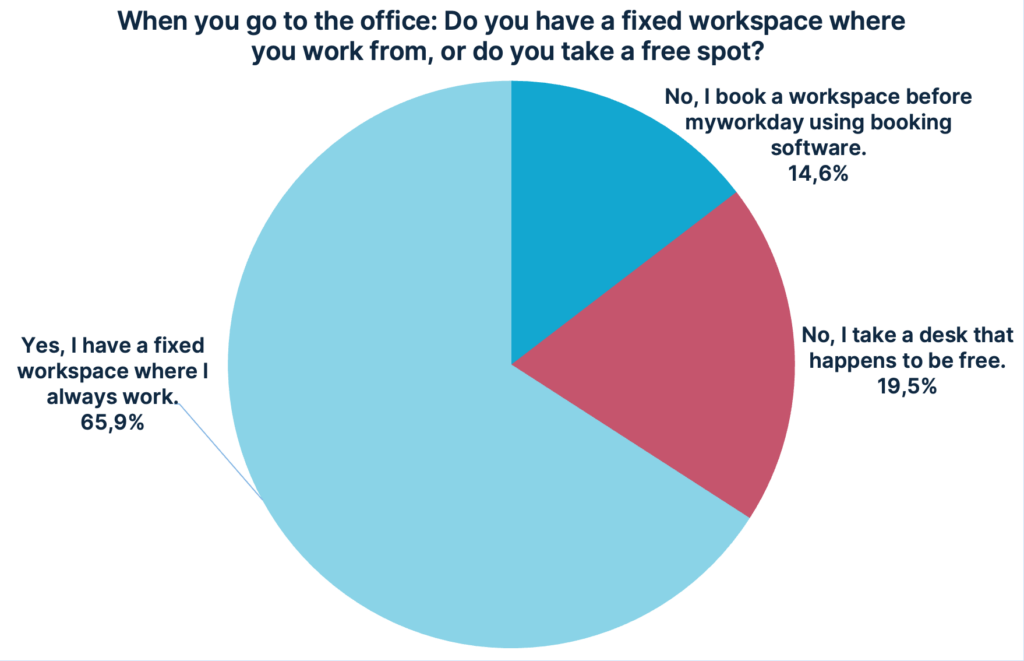Start using ezeep Blue for free now!
Just create a ezeep Blue account and you’re ready to start printing. ezeep Blue is free for up to ten users.
In a recent survey, we gained insights into the desires and needs of employees regarding workplace flexibility post-COVID crisis. With 41 responses, our survey isn’t representative but provides an interesting snapshot of attitudes towards hybrid work and the balance between home office and returning to the office. The results clearly show that the pandemic has permanently changed the way we work.

The survey revealed that an overwhelming majority of the respondents (85%) have the option to work from home, at least part-time, even after the COVID crisis.
An interesting detail concerns the frequency of presence in the office. As many as 19.7% of respondents would prefer not to return to the office at all. The distribution for working 1x per week (12.2%), 2x per week (14.6%), 3x per week (9.8%), and 4x per week (9.8%) is relatively even. Notably, 34.1% would like to appear at the company’s workplace as needed, which could likely be interpreted as a particularly high identification with the company. However, this is merely a hypothesis. The high percentages indicating a preference for working from home reflect a desire for work-life balance and the integration of professional and private life.

On the employer side, many seem to desire a significantly higher presence in the company premises. Employers desire presence 2x per week (32.1%), 3x per week (25%), and 4x per week (10.7%). While 21.4% are flexible, needing presence only as required, only 10.7% desire once-a-week presence, which is considerably lower than employee preferences. It’s important to note that this data only includes responses from those who generally allow remote working. Employers requiring full-time presence at the workplace are not included in this evaluation.

A significant finding from the survey is that a high percentage of employees (65.9%) still have a dedicated desk at work. While 65.9% is not a large percentage in the scenario where all employees would work at the company’s site, the high percentage of assigned desks is surprising given that the sum of those working at the office 1x per week (10.7%), 2x per week (32.1%), and 3x per week (25%) adds up to 67.8%.

The costs associated with dedicated desks are a significant budget item, considering rent, office equipment, and shared facilities like meeting rooms, which cost approximately 500 euros per month per employee according to experts. It seems likely that companies are not capitalizing on potential savings, either due to long-term rental agreements or perhaps because they are not yet comfortable with or have not adopted the concept of hybrid working. Among employees without a fixed desk, 14.6% book their desks via a reservation system. This practice, often referred to as “hot desking“, is a growing trend in modern work environments and supports the flexibility many employees seek. 19.5% rely on finding a free desk when they need one.
Moreover, the survey shows that despite the high acceptance of home office solutions, there is still a clear need for physical office spaces, indicating that the office as a social and collaborative space is still important, at least part-time. Our findings illustrate that flexible work models were not just a temporary adjustment to the pandemic but represent a permanent change in the structure of the work environment.
The results of the ezeep survey are a clear indicator that the work world continues to be in a phase of profound transformation. Companies that recognize and support these changes will not only boost employee satisfaction and productivity but are also better positioned to attract and retain talent in an increasingly competitive market. ezeep provides suitable support for printing infrastructure across all working models.
Just create a ezeep Blue account and you’re ready to start printing. ezeep Blue is free for up to ten users.